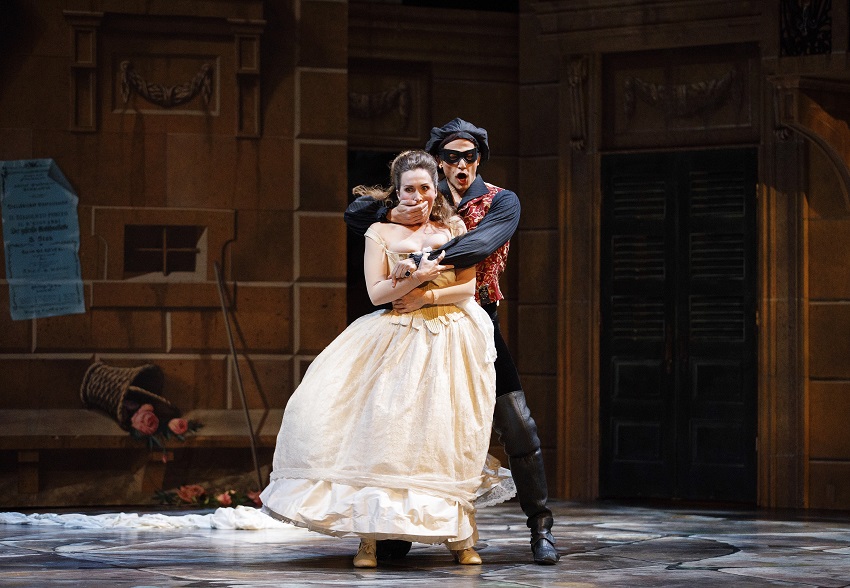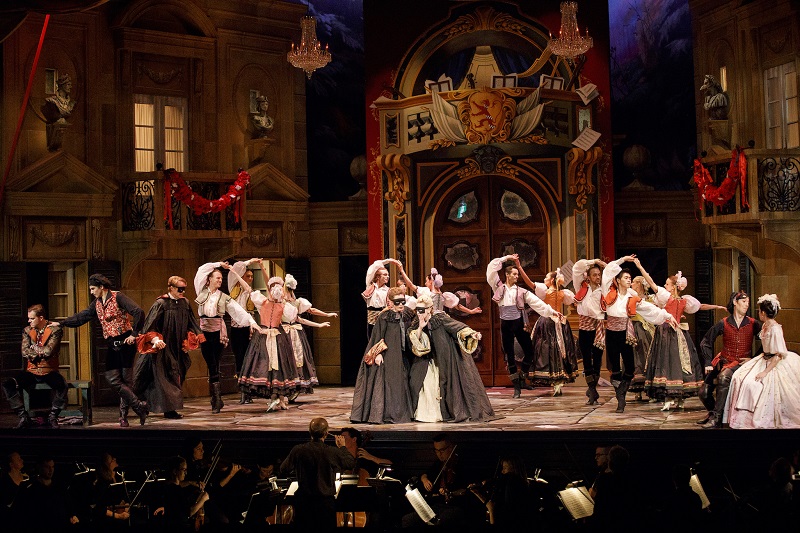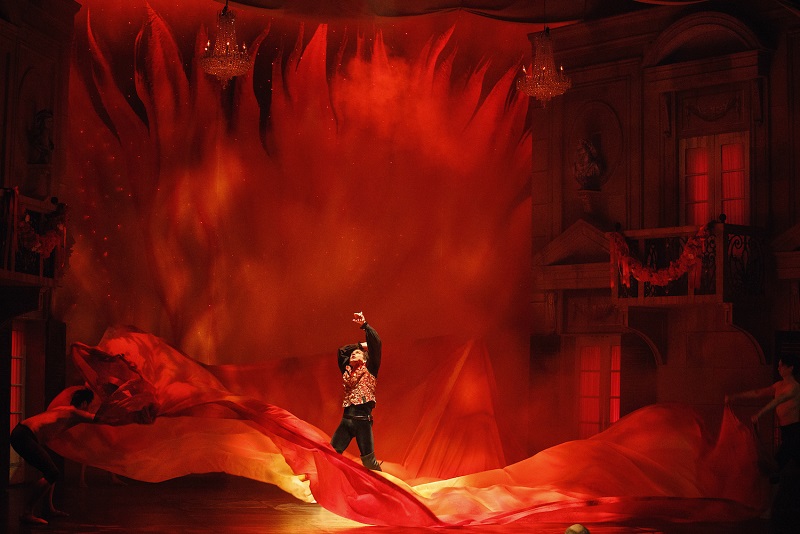Productions of Don Giovanni and its troublesome topic of seduction seem to elicit a variety of mixed feelings from both directors and their audiences. Mozart’s famous dramma giocoso, not that long ago, would have been presented typically as a mythic tale about a charming seducer who eventually gets his just desserts.
But not so today. Nowadays, Don Giovanni tends to be viewed more as contemporary allegory about a real-life sociopath who is less charming than simply repugnant. It’s no accident in these times that the Don Juan story, in any guise, presents directors with a far greater surfeit of problems to tackle that seem to be more trouble than they are worth.
But it’s precisely that kind of complex problem and the test of whether a director is up to the task that makes putting on a successful Don Giovanni so exciting. In light of this, it was clear on Oct. 31st at Toronto’s Ed Mirvish Theatre that Opera Atelier artistic director Marshall Pynkoski was eminently successful in solving many of these contemporary problems.
One challenge is navigating the opera’s different versions. It has become fashionable to use the shorter Prague version and drop some of the longer arias that were added later for Vienna. As a consequence, to maintain dramatic pacing and align the opera more to Mozart’s original vision as an opera buffa, Pynkoski made some strategic cuts to Act II including some of the opera’s more famous numbers, such as Donna Elvira’s “Mi tradì.”
Some audience purists might have groused wondering where a good part of the opera went, but I, for one, took an opposing view. For the sake of dramatic momentum, dealing with the problematic Don Juan archetype, and grappling with Mozart’s original comic intent, the results were very much satisfactory in this outstanding production.
In short, Opera Atelier‘s 2019 production of Mozart’s Don Giovanni is hands-down a triumph, and deserves to be called the Don of the Decade. No other Don Giovanni I have seen across the country in the past ten years has come as close to the contemporary relevance achieved by Pynkoski’s choice to return to the opera’s original comic roots.
With Gerard Gauci’s impressive set design and the late Martha Mann’s copiously detailed costumes, the tasteful visuals left a large splash and complemented the singers’ vocal characterizations and Pynkoski’s direction conspicuously well.
We have to hand it to Pynkoski: this is his best Mozart production yet, complete in its consideration of every minuscule directorial decision, and demonstrating considerable acumen in marrying action to each word and characterization. David Fallis’s unerring musical direction gave us the most recent scholarship on Mozart’s tempi, which lent forward-driving urgency and dramatic authenticity to the structural craft of the opera, most notably in the musically rich Act I finale.
It was hard to miss the Opera Atelier signature stamp throughout. Quick pacing, snappy recitative dialogue, subtle double entendres, highly physicalized comedy, authentic 18th-century gestures and stances, and an unfailing and relentless streak of visual appeal all contributed to a pleasing and engaging performance. Seldom was there a momentary respite in the action.

Mireille Asselin (Zerlina) & Olivier Laquerre (Masetto) in Opera Atelier’s Don Giovanni—Photo: Bruce Zinger
And in case you were wondering, the singing from the all-star cast was uniformly good throughout. Solo singing was important, but not the primary concern, as the production emphasized ensemble work, resulting in fully sonorous harmonizations and seamless rapport between the characters. Also to Pynkoski’s credit was his decision to elevate the servant-class commedia dell’arte romance of Zerlina, played by Mireille Asselin, and Masetto, played by Olivier Laquerre, to its much needed centre-stage prominence. This helped emphasize the aforementioned drive to the opera’s original buffa roots, thereby reminding us of 18th-century audience’s mistrust of libertine minor nobility. Here the plot turns more sanguinely around Masetto’s unvarnished anger at both the Don and Zerlina’s attraction to a gentleman of nebulous allure.
Laquerre helped considerably to elevate Masetto to the full comic stature he deserves, not merely as the sideshow gullible dupe we so often see, but more as a figure caught up in the class struggle bent on foiling a self-entitled Don. Laquerre’s rounded, sympathetic bass-baritone was enthralling all night. Asselin’s playing of Zerlina was equally complex and a study in contrast to most productions, which often reduce the role to simple soubrette.
The conniving pair of Stephen Hegedus (Leporello) and Douglas Williams (Don Giovanni) didn’t miss a comic trick all night. Hegedus’ feckless Leporello, callow to the core, vacillated easily from brazen toady to unwilling henchman. Particularly important was Hegedus’ singing of the Act I ‘Catalogue’ aria to a bewildered and nauseated Donna Elvira, played by Carla Huhtanen, whose naïvely obsessive characterization was on point all night. And Williams was a star in the title role, wholly believable as Elvira’s pathological seducer, singing with enviable harmonic capability.
Meghan Lindsay (Donna Anna) and Colin Ainsworth (Don Ottavio) were equally important in portraying the complicated relationship between a wronged woman in search of vengeance for her murdered father, the Commendatore (stoically well-sung and acted by Gustav Andreassen), and a vapid but well-intentioned Don Ottavio who just cannot understand that his fiancée needs some time to grieve.
But the concluding finale was one of the most compelling parts of the evening. At the end of the final sextet, after a musically masterful rendering of Don Giovanni’s punishment while his house burns, the scrim unexpectedly rises to reveal a grinning Don in a murky netherworld. It was chilling to see: even though the dead Don is gone, it’s his deeds that live on, still tormenting us down through the centuries like those of so many contemporary Dons today.












